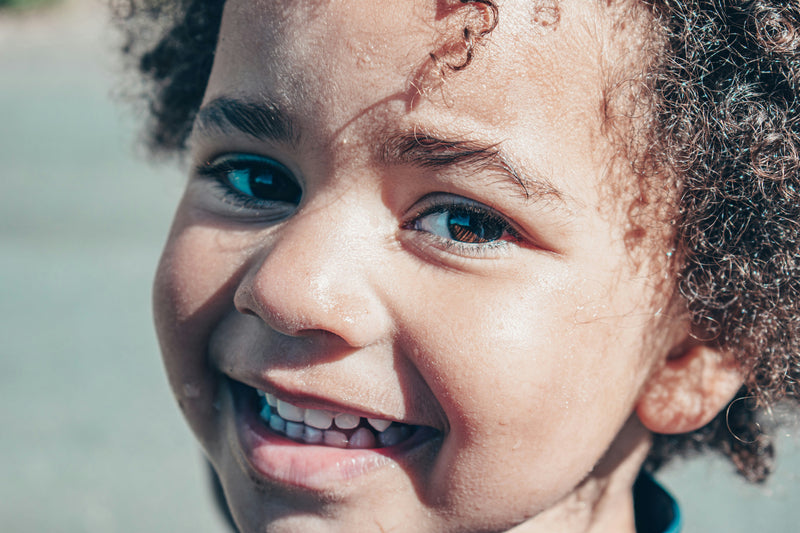
The Science of Self-Esteem: How Neuroscience and Growth Mindset Build Unshakeable Confidence in Children 🧠✨
Imagine a seven-year-old who approaches a challenging math problem not with anxiety, but with genuine curiosity. She takes a deep breath, sits up straighter, and says to herself, "My brain grows when I work on hard things." This isn't just wishful thinking—it's the result of understanding how neuroscience and psychology intersect to build authentic self-esteem. Thanks to groundbreaking research from neuroscientist Dr. Andrew Huberman and psychologist Dr. Carol Dweck, we now understand that true confidence isn't built through empty praise, but through specific practices that literally rewire the developing brain. 🌟🧪
The Neuroscience Revolution: What Huberman Teaches Us About Confidence 🔬⚡
Dr. Andrew Huberman, Stanford neuroscientist and host of the Huberman Lab podcast, has revolutionized our understanding of how the brain builds confidence through neuroplasticity. His research reveals that self-esteem isn't a fixed trait—it's a skill that can be developed through specific neurobiological practices:
The Stress-Performance Connection 💪🎯
Huberman's research shows that learning to manage stress responses is crucial for building confidence. When children understand that feeling nervous before a challenge is normal and can actually enhance performance, they develop what he calls "stress inoculation"—the ability to use stress as fuel rather than letting it paralyze them.
The Power of Physiological Regulation 🫁❤️
Through controlled breathing techniques and posture awareness, children can literally change their brain chemistry to support confidence. Huberman's work demonstrates that standing tall, taking slow deep breaths, and maintaining steady eye contact aren't just behavioral changes—they're neurological interventions that build self-assurance from the inside out.
The Dopamine-Effort Connection 🎊🏃♀️
Perhaps most importantly, Huberman's research reveals that true confidence comes from finding satisfaction in effort itself, not just outcomes. When children learn to release dopamine during the process of trying hard—not just when they succeed—they build what he calls "intrinsic motivation" that sustains them through challenges.
The Confident Mindset Journal incorporates these neurobiological principles through activities that help children recognize their physiological responses to challenges and develop regulation strategies that support authentic confidence. 📔🧠
Growth Mindset: Dweck's Foundation for Lifelong Learning 🌱📚
Dr. Carol Dweck's decades of research at Stanford University revealed a fundamental truth: how children think about their abilities determines whether they develop genuine confidence or fragile self-esteem that crumbles under pressure.
Fixed vs. Growth Mindset: The Confidence Divide 🔄
Dweck's research shows that children with a "fixed mindset" believe their abilities are set in stone, leading to fear of challenges and a fragile sense of self-worth tied to always being "smart" or "talented." In contrast, children with a "growth mindset" understand that abilities develop through effort, strategy, and help from others, creating resilient confidence that grows stronger with each challenge.
The Process Praise Revolution 🎉
One of Dweck's most practical discoveries is that how we praise children fundamentally shapes their mindset. Instead of "You're so smart!" (which can create fixed mindset and fear of looking stupid), effective praise focuses on process: "I notice how you tried three different strategies to solve that problem!" This type of feedback builds what Dweck calls "mastery orientation"—intrinsic motivation to learn and grow.
The Power of "Yet" 🔮
Dweck's simple but profound insight that adding "yet" to statements transforms fixed mindset into growth mindset has revolutionized classrooms worldwide. "I can't do this" becomes "I can't do this yet," shifting children's relationship with learning from limitation to possibility.
The Curiosity Mindset Journal builds on Dweck's growth mindset principles by encouraging children to approach learning with wonder and persistence, reinforcing the neural pathways that support lifelong confidence in their ability to grow. 🔍✨
The Perfect Partnership: How Huberman and Dweck's Research Combines 🤝🔬
When we combine Huberman's neuroscience insights with Dweck's growth mindset research, we get a powerful framework for building genuine self-esteem in children:
Neuroplasticity Meets Growth Mindset 🧠🌱
Huberman's research on neuroplasticity provides the biological foundation for Dweck's growth mindset theory. When children understand that their brains literally grow new connections when they learn, they develop what researchers call "intellectual courage"—the willingness to tackle difficult challenges because they know struggle makes them stronger.
Stress + Growth = Confidence 💪📈
Both researchers emphasize that avoiding challenge doesn't build confidence—engaging with appropriate levels of stress while maintaining a growth orientation does. Huberman's stress inoculation protocols combined with Dweck's mastery orientation create children who see difficulties as opportunities rather than threats.
The Effort-Reward System 🎯🏆
Huberman's dopamine research validates Dweck's focus on process praise. When children learn to find satisfaction in effort itself (Huberman's neurobiological finding) while maintaining belief in their ability to improve (Dweck's psychological insight), they develop unshakeable confidence rooted in reality rather than fantasy.
Physiological + Psychological Integration 🫁🧘♀️
Huberman's breathing techniques and posture work provide concrete tools for implementing Dweck's mindset principles. When children feel physiologically centered, they're more likely to maintain growth mindset even during challenges.
The Kindness Mindset Journal helps children develop the self-compassion that both researchers identify as crucial for maintaining confidence during setbacks. 📔💕
Practical Applications: Building Science-Based Self-Esteem 🛠️🧪
How can parents and educators apply these research findings to build authentic self-esteem in children? Here are evidence-based strategies:
1. The Huberman Confidence Protocol 🫁💪
- Morning Breathing: Teach children 4-7-8 breathing (inhale for 4, hold for 7, exhale for 8) to regulate their nervous system before challenges
- Posture Power: Encourage "superhero stance" (feet shoulder-width apart, hands on hips, chest open) for 2 minutes before difficult tasks
- Cold Exposure: Age-appropriate brief cold exposure (like cold showers ending hot showers) builds stress tolerance and confidence
2. The Dweck Mindset Integration 🌱🗣️
- Process Language: Replace "You're so smart" with "I see how you stuck with that problem even when it got tricky"
- Failure Reframing: Help children see mistakes as "brain growth moments" rather than personal deficits
- Effort Celebration: Acknowledge hard work and strategy use, not just outcomes
3. The Combined Approach 🔄⚡
- Stress + Story: When children face challenges, help them breathe deeply (Huberman) while telling themselves "This is making my brain stronger" (Dweck)
- Reflection Rituals: Use journaling to process both physiological responses and mindset shifts
- Community Connection: Build supportive environments where children can practice vulnerability and growth together
The Confident Mindset Journal provides structured activities that integrate these approaches, helping children develop both the neurological and psychological foundations for lasting confidence. 📝🌟
Common Self-Esteem Myths: What the Science Debunks 🚫🔍
Both Huberman and Dweck's research challenges common misconceptions about building children's self-esteem:
Myth: "Always tell children they're special and amazing" 🌟❌
Science Says: Empty praise actually undermines confidence by creating pressure to maintain an impossible standard and fear of appearing ordinary.
Myth: "Protect children from stress and failure" 🛡️❌
Science Says: Appropriate stress exposure builds resilience, while over-protection creates fragile confidence that crumbles under real-world pressure.
Myth: "Self-esteem comes from feeling good about yourself" 😊❌
Science Says: Authentic confidence comes from competence built through effort, not feelings detached from reality.
Myth: "Some children are just naturally confident" 🧬❌
Science Says: Confidence is a skill developed through specific practices, not an inborn trait.
Myth: "Positive thinking alone builds confidence" 💭❌
Science Says: Confidence requires both physiological regulation (Huberman) and realistic mindset work (Dweck), not just optimistic thoughts.
The structured approach in the Curiosity Mindset Journal helps children develop evidence-based confidence rooted in their actual capabilities and growth experiences. 🔬📚
The Developmental Timeline: Age-Appropriate Confidence Building 👶➡️👧➡️🧒
Understanding when and how to apply these research findings is crucial for effectiveness:
Ages 3-5: Foundation Building 🧱
- Focus on basic breathing techniques and body awareness (Huberman)
- Introduce simple process praise and "yet" language (Dweck)
- Emphasize effort over outcome in daily activities
Ages 6-8: Skill Development 🎯
- Add more sophisticated stress regulation techniques
- Deepen growth mindset understanding through stories and examples
- Begin structured reflection through age-appropriate journaling
Ages 9-12: Integration and Independence 🔗
- Teach children to recognize and manage their own stress responses
- Help them develop personal learning strategies and growth goals
- Encourage self-advocacy and appropriate risk-taking
The developmentally appropriate activities in the Confident Mindset Journal support this natural progression, helping children build confidence skills at each stage of development. 📈👶
Real-World Applications: Stories from the Field 🏫🏠
Here's how these research-based approaches look in practice:
In the Classroom 👩🏫
Ms. Rodriguez notices her third-graders getting anxious before math tests. She teaches them Huberman's breathing protocol and Dweck's growth mindset self-talk. Students now say, "My brain is getting stronger" while taking slow, deep breaths before challenging problems.
At Home 🏡
Eight-year-old Marcus struggles with piano practice. His dad stops saying "You're so musical!" and starts noticing: "I heard you play that difficult section five times until you got it right. That persistence is what makes musicians improve." Marcus begins to see practice as brain-building rather than performance pressure.
On the Playground 🏃♂️
When kindergartener Aisha falls off the monkey bars, instead of rushing to comfort her, her teacher helps her breathe deeply and asks, "What did your muscles learn just now?" Aisha realizes her grip got stronger from trying, even though she fell.
The Kindness Mindset Journal helps children process these real-world experiences with self-compassion, building the emotional foundation necessary for lasting confidence. 📚❤️
The Long Game: Lifelong Benefits of Science-Based Self-Esteem 🌍🚀
When we build children's self-esteem using Huberman and Dweck's research-based approaches, we're setting them up for lifelong advantages:
- Academic resilience: Students approach learning challenges with curiosity rather than anxiety 📚🧠
- Career adaptability: Adults who learned to embrace challenge early adapt better to changing work environments 💼🔄
- Relationship health: People with growth mindset handle interpersonal challenges more constructively 👥❤️
- Mental wellness: Those who learned stress regulation early have better tools for managing life's pressures 🧘♀️💪
- Innovation capacity: Individuals comfortable with failure and growth drive creative problem-solving 💡🌟
By using tools like the Confident Mindset Journal, Curiosity Mindset Journal, and Kindness Mindset Journal, we provide children with the scaffolding to develop these essential life skills during their most formative period. 📚🧱
Starting Today: Your Science-Based Confidence Action Plan 👣🔬
Ready to apply Huberman and Dweck's research to build authentic self-esteem in the children you care about? Start with these evidence-based steps:
- Morning Protocols: Begin each day with 2 minutes of deep breathing and positive posture (Huberman) ☀️🫁
- Process Focus: Replace outcome praise with effort and strategy recognition (Dweck) 🎯👏
- Stress Reframing: Help children see challenges as "brain training" opportunities 🧠💪
- Reflection Habits: Use structured journaling to integrate physiological and psychological growth 📔✍️
- Community Building: Create environments where children can safely practice vulnerability and growth 👥🌱
- Science Education: Teach children about neuroplasticity and growth mindset in age-appropriate ways 🧪📚
The Confident Mindset Journal provides the perfect starting point for implementing these research-based approaches in your daily routine. 📝✨
Join Our Science-Based Confidence Conversation! 💬🔬
How have you applied neuroscience and psychology research to build genuine self-esteem in children? What changes have you noticed when combining Huberman's physiological approaches with Dweck's mindset work? Share your experiences in the comments below!
Remember: When we build children's self-esteem using the combined wisdom of neuroscience and psychology research, we're not just making them feel good—we're giving them the neurobiological and psychological tools to develop unshakeable confidence rooted in reality. In a world that increasingly demands resilience, adaptability, and authentic self-knowledge, there may be no greater gift we can offer than teaching children to trust both their brains' capacity to grow and their own ability to meet challenges with grace. ✨🧠💪



0 comments